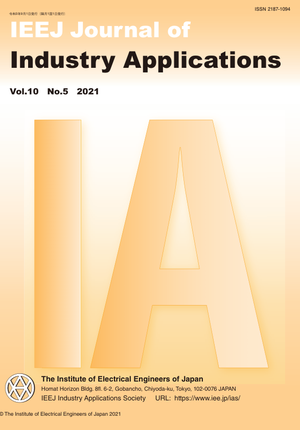Range Extension Control of a Three-Wheel Electric Vehicle Prototype Based on Aggregation and Distribution
Range Extension Control of a Three-Wheel Electric Vehicle Prototype Based on Aggregation and Distribution
カテゴリ: 論文誌(論文単位)
グループ名: 【D】産業応用部門(英文)
発行日: 2021/09/01
タイトル(英語): Range Extension Control of a Three-Wheel Electric Vehicle Prototype Based on Aggregation and Distribution
著者名: Binh-Minh Nguyen (Department of Advanced Science and Technology, Control System Laboratory, Toyota Technological Institute), Michihiro Kawanishi (Department of Advanced Science and Technology, Control System Laboratory, Toyota Technological Institute), Da
著者名(英語): Binh-Minh Nguyen (Department of Advanced Science and Technology, Control System Laboratory, Toyota Technological Institute), Michihiro Kawanishi (Department of Advanced Science and Technology, Control System Laboratory, Toyota Technological Institute), Daichi Hasegawa (Department of Advanced Science and Technology, Control System Laboratory, Toyota Technological Institute), Kento Ohara (Department of Advanced Science and Technology, Control System Laboratory, Toyota Technological Institute), Tatsuo Narikiyo (Department of Advanced Science and Technology, Control System Laboratory, Toyota Technological Institute)
キーワード: electric vehicle,in-wheel-motor,range extension control system,passivity,disturbance observer,L2 stability
要約(英語): This paper presents an approach for the range extension control of a three-wheel electric vehicle prototype. By using the torque distribution vector to aggregate motor speeds, the physical model of the vehicle is mapped to an aggregation-and-distribution model (AaDM), which possesses the passivity property. Based on the AaDM, motion control and energy optimization can be designed separately. In particular, a speed controller was designed for the system to operate in the automatic cruise mode. A disturbance observer was designed to operate in the human driving mode. In this study, the conditions for the controllers were obtained to sufficiently ensure the L2 stability of the control system. The conditions can be checked conveniently without establishing the dynamical equation of the overall system. Under the practically reasonable assumption on motor parameters, the analytical solutions of the optimal torque distribution ratios and d-axis currents were approximately derived in this study. Various test scenarios were considered to validate the proposed control systems. The test results show that in either operation modes, the system can prevent wheel slip, thereby simultaneously improving motion control and energy minimization.
本誌: IEEJ Journal of Industry Applications Vol.10 No.5 (2021)
本誌掲載ページ: 528-539 p
原稿種別: 論文/英語
電子版へのリンク: https://www.jstage.jst.go.jp/article/ieejjia/10/5/10_21000320/_article/-char/ja/
受取状況を読み込めませんでした


